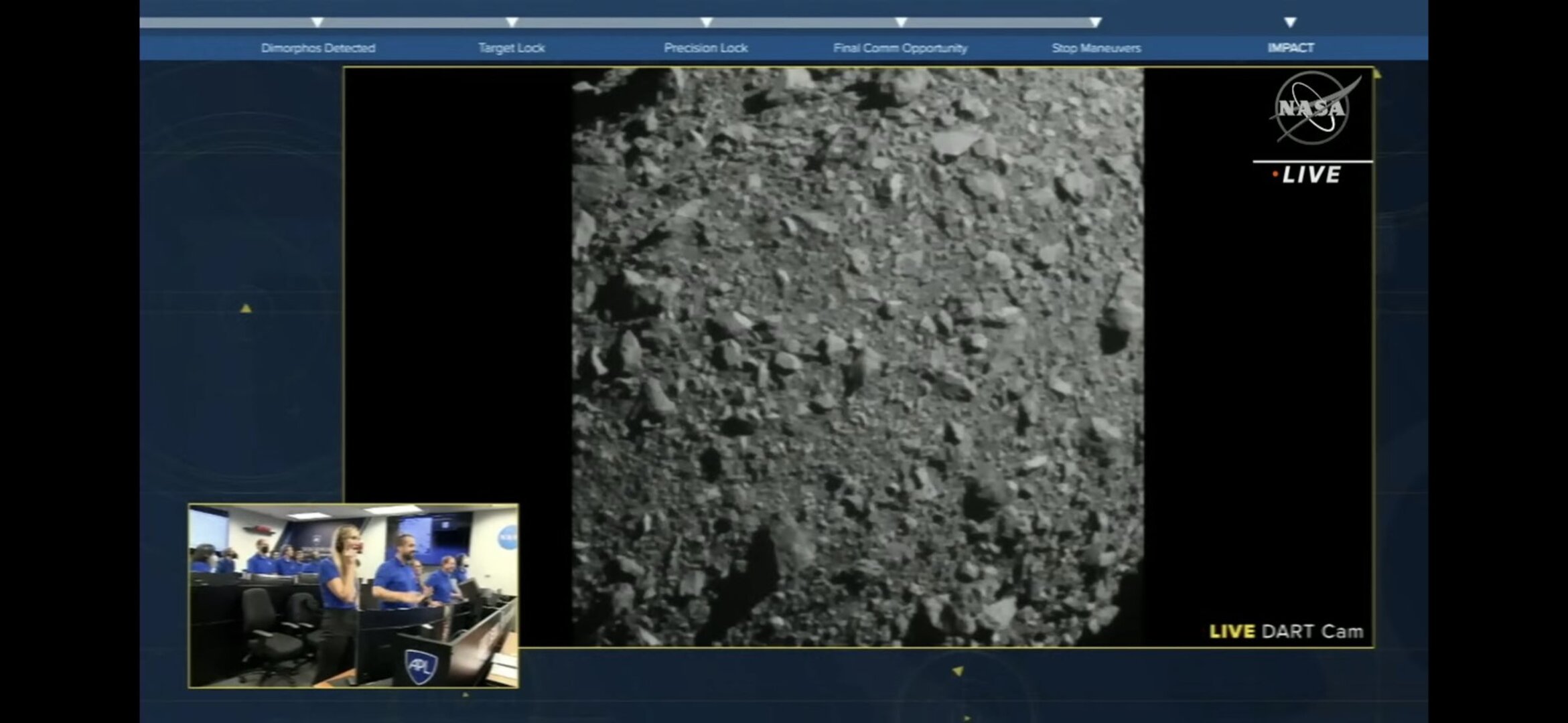Hera team congratulates NASA asteroid impactors
27/09/2022
38 views
0 likes
ESA’s Hera mission team congratulates their counterparts in NASA’s DART mission team for their historic impact with the Dimorphos asteroid. Moving at 6.1 km per second, the car-sized Double Asteroid Redirect Test spacecraft struck the 160-m diameter asteroid at 01:15 CEST (00:15 BST) in the early hours of Tuesday morning, in humankind’s first test of the ‘kinetic impactor’ method of planetary defence.
Ian Carnelli, Hera mission manager, says: “Making contact with a target that small across 11 million km of space is an impressive technical achievement in itself, tonight a wonderful page of space history has been written. One that we have all been looking forward to for many years. Today our thoughts are also with the late Prof. Andrea Milani who first outlined this deflection test in 2004.
“Next comes a period of sustained observation by ground and space-based telescopes to determine if DART’s impact has indeed achieved what it was intended to do, and move the orbit of the Dimorphos ‘moonlet’ around its parent 780-m diameter Didymos asteroid.
“In parallel, ESA and our industrial partners continue our work to construct the Hera spacecraft, which will launch in late 2024, beginning its own voyage to Dimorphos to perform a close-up survey of the post-impact asteroid. Hera will gather key information such as the size of DART’s crater, the mass of Dimorphos and its make-up and internal structure. This extra data will help turn the DART deflection experiment into a well-understood, repeatable technique that might one day be carried out for real.”
International collaboration
NASA’s DART and ESA’s Hera missions are supported by the same international teams of scientists and astronomers, and take place through an international collaboration called AIDA – the Asteroid Impact and Deflection Assessment. Planetary defense has no borders and is a great example of what international collaboration can achieve.
The missions were conceived together during the early years of the 21st century, when concern about the destructive potential of incoming asteroids led to the creation of the first automated survey systems, resulting in ESA’s Near Earth Object Coordination Centre, NEO-CC and NASA’s Sentry system.
But the space scientists working on the system realised that asteroid threat identification was not sufficient; they also needed to come up with a way of addressing that threat.
Ian explains: “Mathematican and astronomer Andrea Milani of the University of Pisa – a planetary defence pioneer who sadly passed away in 2018 – came up with the idea of a double-spacecraft mission he called ‘Don Quijote’: one spacecraft would impact an oncoming asteroid while the other observer spacecraft would measure the degree of deflection.”
In the event the concept was internationalised, with NASA taking on what would evolve into DART. ESA’s Hera will follow its predecessor into space in 2024, arriving at Dimorphos two years later. Its target asteroid will hold special significance as the first body in the Solar System to have had both its surface and its orbit modified by human intervention in a measurable way. Its name taken from the Greek for ‘having two forms’.
ESA’s Hera spacecraft taking shape
Hera’s payload module is currently taking shape at OHB in Germany while its propulsion module is finalised at Avio in Italy, with companies and institutions across 17 European countries making their own contribution to the mission – such as GMV in Spain, developing the automated guidance, navigation and control system that will allow the spacecraft to safely navigate the double-asteroid system, akin in function to a self-driving car.
The desk-sized Hera is packed with instruments, with its optical Asteroid Framing Camera supplemented by thermal and spectral imagers, as well as a laser altimeter for surface mapping. Hera is also three spacecraft in one, because it will additionally deliver a pair of shoebox-sized ‘CubeSats’ into Dimorphos’ vicinity.
The Juventas CubeSat will perform the first ever radar probe of an asteroid, while also carrying a gravimeter and accelerometer to measure the body’s ultra-low gravity. The other CubeSat, Milani – named after AIDA’s inventor – will perform near-infrared spectral imaging and sample asteroid dust.
The CubeSat pair will remain in contact with their Hera mothership and each other through a novel inter-satellite link system, to build up experience of overseeing multiple spacecraft in exotic near-weightlessness, before eventually touching down on Dimorphos.
Ian concludes: “Thanks to DART, we’ve had a tantalising glimpse of our destination, now we can’t wait to go back and explore it in depth, to find out how the impact has changed it, and help make Earth a safer place in the process.”
For all the latest Technology News Click Here

